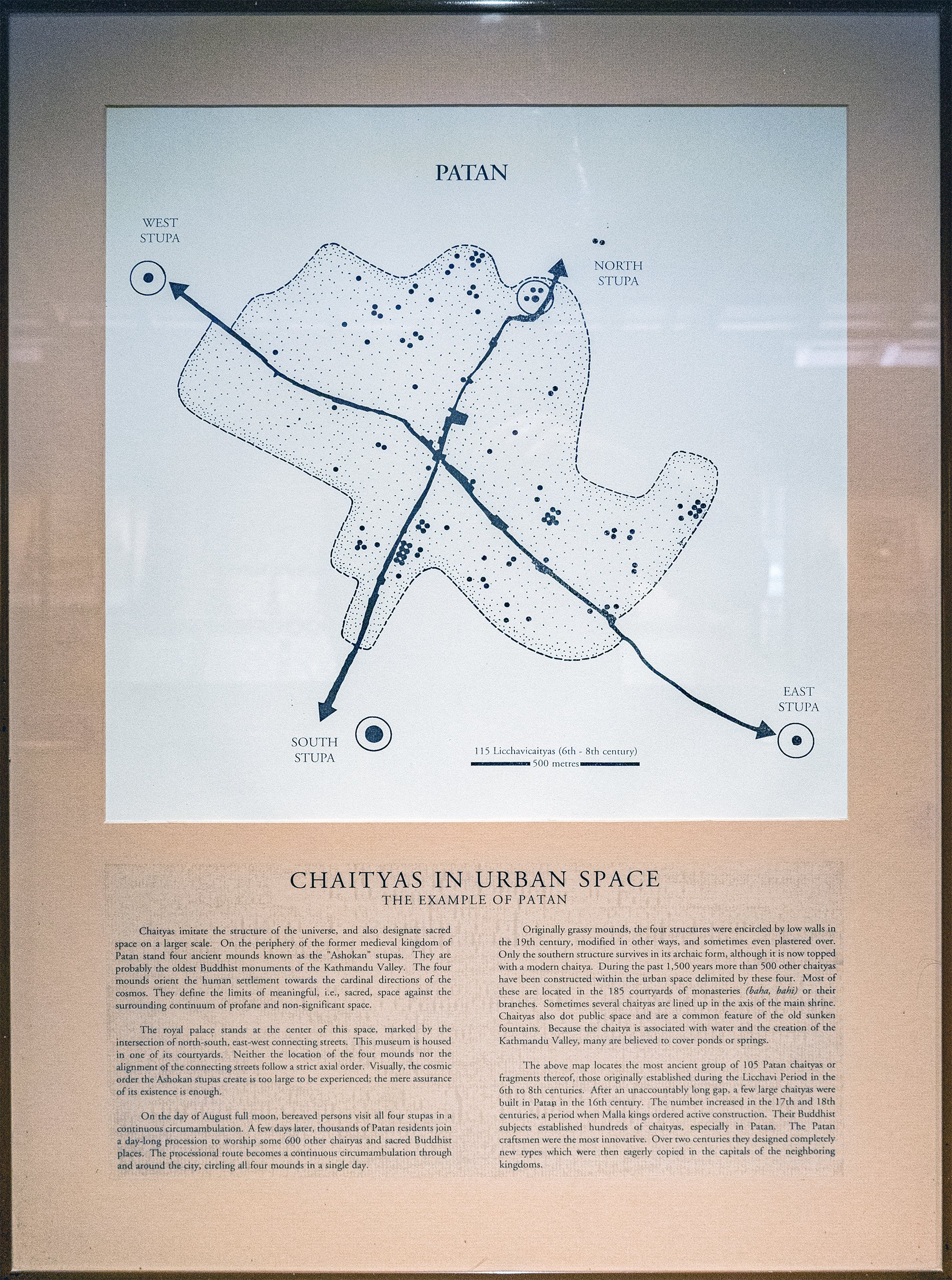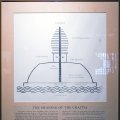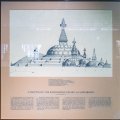Patan Museum (Nepal): photo 119
Photo 119 of 212 in Gallery: Patan Museum (Nepal)

Image title: Chaityas in urban space
Description of the photo
Chaityas in urban space (the example of Patan)—Chaityas imitate the structure of the universe, and also designate sacred space on a larger scale. On the periphery of the former medieval kingdom of Patan stand four ancient mounds known as the “Ashokan” stupas. They are probably the oldest Buddhist monuments of the Kathmandu Valley. The four mounds orient the human settlement towards the cardinal directions of the cosmos. They define the limits of meaningful, i.e., sacred, space against the surrounding continuum of profane and non-significant space.
The royal palace stands at the center of this space, marked by the intersection of north-south, east-west connecting streets. This museum is housed in one of its courtyards. Neither the location of the four mounds nor the alignment of the connecting streets follow a strict axial order. Visually, the cosmic order the Ashokan stupas create is too large to be experienced; the mere assurance of its existence is enough.
On the day of August full moon, bereaved persons visit all four stupas in a continuous circumambulation. A few days later, thousands of Patan residents join a day-long procession to worship some 600 other chaityas and sacred Buddhist places. The processional route becomes a continuous circumambulation through and around the city, circling all four mounds in a single day.
Originally grassy mounds, the four structures were encircled by low walls in the 19th century, modified in other ways, and sometimes even plastered over. Only the southern structure survives in its archaic form, although it is now topped with a modern chaitya. During the past 1,500 years more than 500 other chaityas have been constructed within the urban space delimited by these four. Most of these are located in the 185 courtyards of monasteries (baha, baht) or their branches. Sometimes several chaityas are lined up in the axis of the main shrine. Chaityas also dot public space and are a common feature of the old sunken fountains. Because the chaitya is associated with water and the creation of the Kathmandu Valley, many are believed to cover ponds or springs.
The above map locates the most ancient group of 105 Patan chaityas or fragments thereof, those originally established during the Licchavi Period in the 6th to 8th centuries. After an unaccountably long gap, a few large chaityas were built in Patan in the 16th century. The number increased in the 17th and 18th centuries, a period when Malla kings ordered active construction. Their Buddhist subjects established hundreds of chaityas, especially in Patan. The Patan craftsmen were the most innovative. Over two centuries they designed completely new types which Were then eagerly copied in the capitals of the neighboring kingdoms.
Gallery information:
The Patan Museum is located on the Durbar square of Patan (Lalitpur/Lalitapura, Kathmandu, Nepal) which is associated Keshav Narayan Chowk (Keshavnarayan)—a form of Lord Vishnu. Being listed as a World Heritage Site, the whole of Durbar square is filled with exquisite temples, sculptures and other ancient structures, of which the ancient history history can be traced to the Malla Kings of Lalitpur. It is an important site for both Buddhism and Hinduism.
Photo details:
Date: 2019-12-02
Camera: SONY ILCE-6400
Exposure: 1/160
Aperture: f/4
ISO: 1600
Focal length: 18mm
High resolution:
Download file
Size: 3.56 MB
Resolution: 2000 x 2689
© Photograph by Gabe Hiemstra.
License: CC BY-NC-ND 4.0

